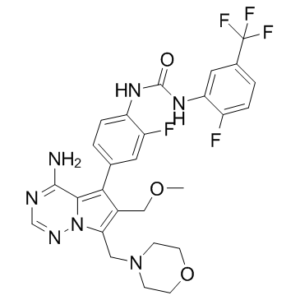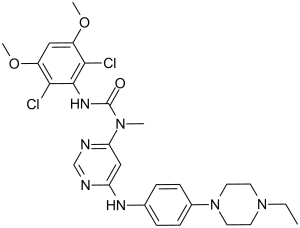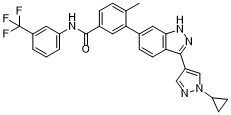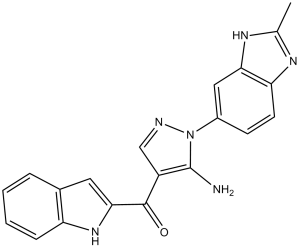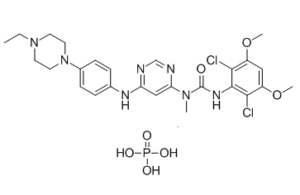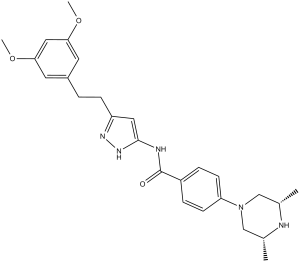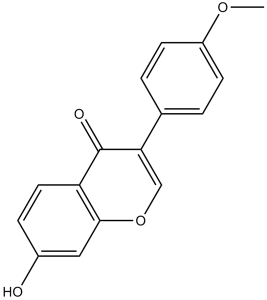Gambogenic Acid, a naturally occuring ingredient dound in gamboge, is a potent inhibitor of the fibroblast growth factor receptor (FGFR) signaling pathway in erlotinib-resistant non-small-cell lung cancer (NSCLC).
ACTB-1003 is an orally available multi-kinase inhibitor with IC50 values of 6, 2 and 4 nM for FGFR1, VEGFR2 and Tie-2.
Infigratinib (also known as BGJ398; BGJ-398; NVP-BGJ398; Truseltiq) is a novel, potent, selective, and orally bioavailable FGFR (fibroblast growth factor receptors) inhibitor with potential antiangiogenic and antineoplastic activities.
FGFR1/DDR2 inhibitor 1 (compound 11k) is an inhibitor of fibroblast growth factor receptor 1 (FGFR1) and discoindin domain receptor 2 (DDR2), with IC50 of 31.1 nM, 108.4 nM and 3.2 nM for FGFR1, KG-1, and DDR2, respectively.
CH5183284 (also known as FF284; Debio-1347) is a novel, potent, selective and orally bioavailable FGFR inhibitor with potential antitumor activity.
Infigratinib phosphate (formerly BGJ-398; BGJ398; NVP-BGJ398 phosphate; Truseltiq), the phosphate salt of Infigratinib, is an orally bioavailable FGFR (fibroblast growth factor receptors) inhibitor that has gained FDA approval in May 2021 to treat cholangiocarcinoma whose disease meets certain criteria.
AZD4547 (AZD-4547; AZD 4547) is a novel and orally bioavailable FGFR (fibroblast growth factor receptor) inhibitor with potential antineoplastic activity.
PD166866, a member of a new structural class of tyrosine kinase inhibitors, the 6-aryl-pyrido[2,3-d]pyrimidines, is a a new nanomolar potent and selective small molecule inhibitor of FGFR (fibroblast growth factor-1 receptor) tyrosine kinase inhibitor with an IC50 of 52.4 nM.
Formononetin (Biochanin B; Flavosil; Formononetol), an O-methylated isoflavone, is a naturally occuring and bioactive flavonoid found in the root of Astragalus membranaceus.
ODM-203 is a potent and orally bioavailable inhibitor of FGFR and VEGFR families inhibitor with IC50s of 11, 16, 6, 35 nM towards recombinant FGFR1, FGFR2, FGFR3 and FGFR4 as well as 26, 9, 5 nM towards VEGFR1, VEGFR2 and VEGFR3, respectively.

